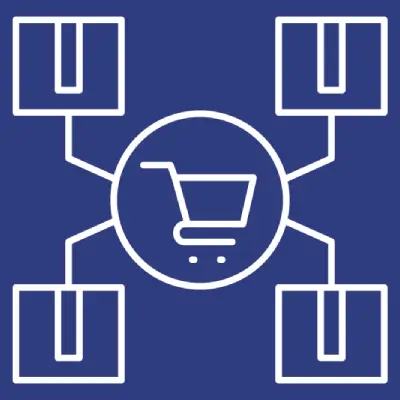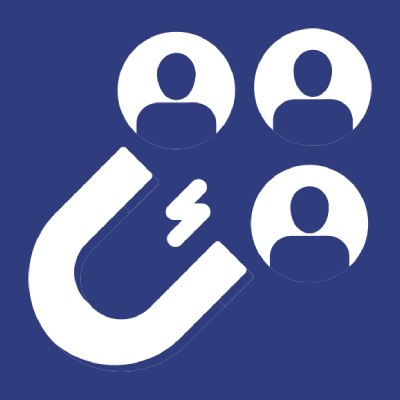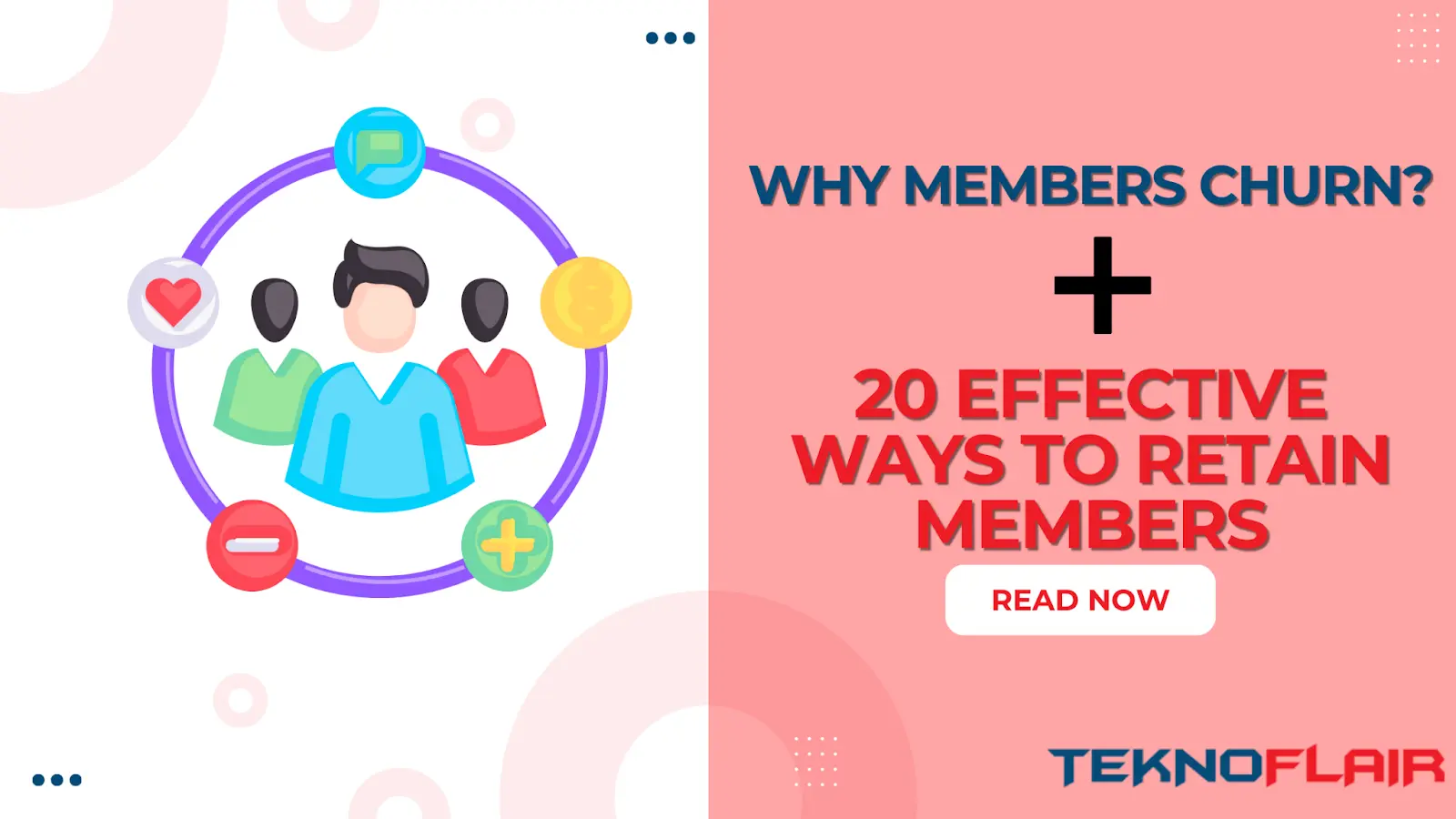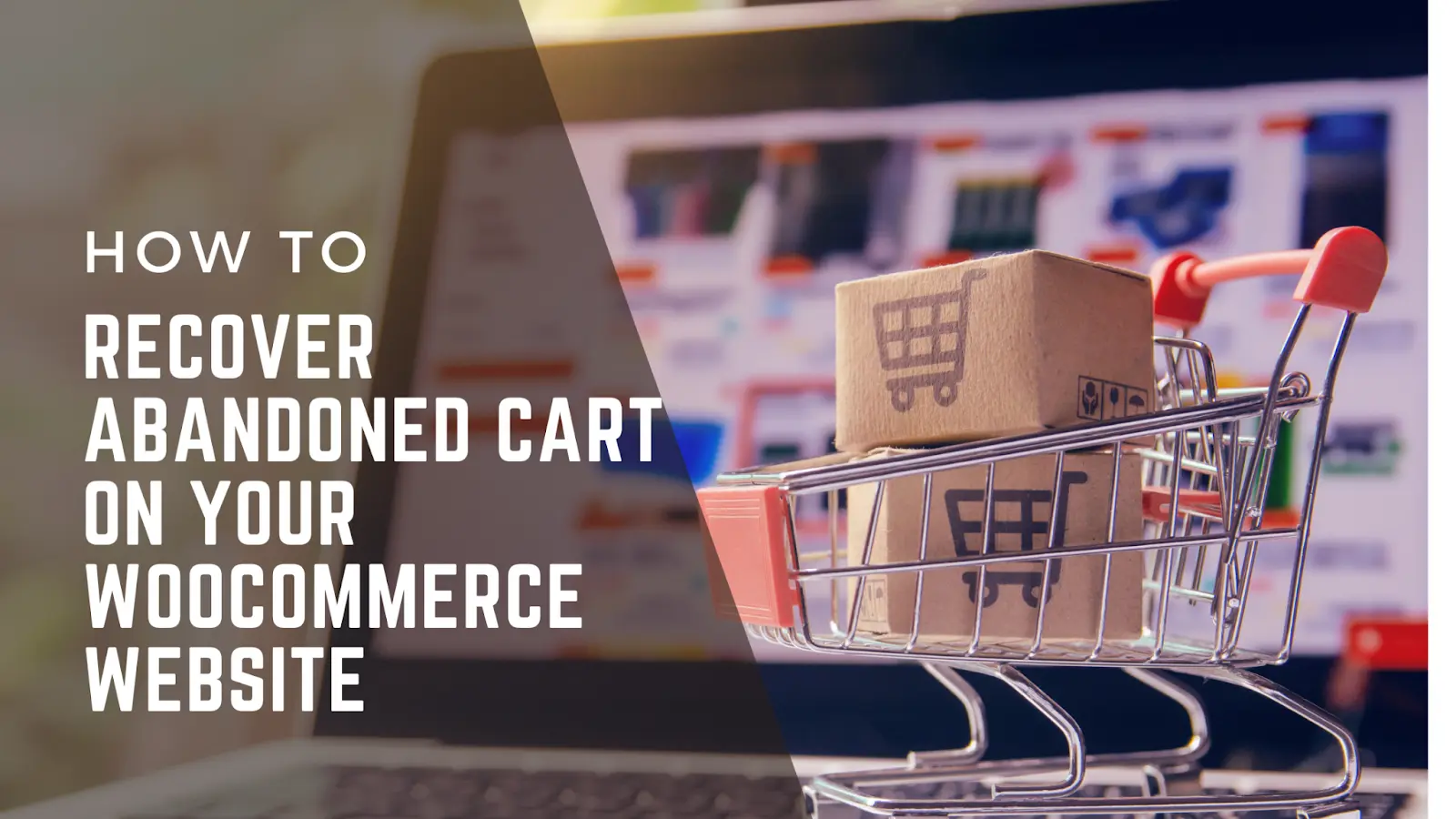According to Baymard Institute, there is a 70% abandoned cart rate in the e-commerce industry as of now.
Quite a lot, right?
It means that no matter how much value your course provides, there are 70% chances that your customer will not be able to complete the purchase process.
But why is that?
Is there something wrong with my course?
If this is what troubles you right now, then you’ve landed on the right page.
In this article, we will explore in-depth the concept of WooCommerce abandoned cart recovery for your LearnDash website along with the reasons why it happens and how to recover it.
What is a WooCommerce Abandoned Cart?
First things first, what does it really mean by a WooCommerce Abandoned Cart?
Imagine a car that you love but wouldn’t drive ever in a fear that it will get scratches. What happens with that car?
It rests in your Garage forever as you have abandoned it.
Yes, that’s what it means in simpler terms.
Similarly, in E-Commerce, when a customer visits your website, likes your product, adds it to cart, and initiates the check-out process.
But just before that beautiful “Buy” button is clicked, you notice that it doesn’t happen ever.
What happened to your customer who was really interested in your product and spent almost 10 minutes deciding whether to buy your product in black or blue color?
When it happens, many business owners tend to believe that there might be some network issue and wait for that customer to return.
But the customer never returns and an enthusiastic business owner like you, it’s a bummer.
So what happens to that cart? Well, after a certain scheduled period, it’s marked Abandoned.
And, when there is an Abandoned cart in your WooCommerce store, it doesn’t generally mean that you should give-up on that customer. Instead, you need to understand the reasons behind the behavior of the customer.
That’s really important if you wish for WooCommerce Abandoned Cart Recovery.
Do you know those reasons? Well, if not, there’s nothing to worry as we have laid out the most common reasons a customer doesn’t complete the check-out process.
Common Reasons For Abandoned Carts
There can be dozens of reasons why a customer leaves without buying the product even after adding it to the cart. However, as a business owner, it’s important to know why a customer did that.
It’s because when you understand what bothered your customer, you can counter it with offerings that can not only help you in recovering your abandoned carts but creating a loyal customer that stays with you forever.
So, here are a few reasons for increased abandoned carts in your WooCommerce website.
- Unexpected Cost – One of the reasons why a customer might leave without purchasing is because of the additional cost such as shipping, taxes, or other hidden charges which weren’t clear in the product page. If this is the reason, then you need to revisit your product page and ensure that every additional charge is clearly mentioned there so that the customer doesn’t get a sudden shock.
- Lengthy Check-Out Process: Trust me, no customer will ever want to indulge in a complicated and lengthy process of checking-out. Think like a customer for once, you have chosen a product and wish to buy it but the multi-pop ups and the redirection towards different pages are so frustrating that you change your mind to even buy the product. To avoid it, ensure that you have a simple check-out process that can help customers to buy a product instantly.
- Account Creation Requirement: See, customers nowadays have become lazy and want things to happen instantly. So, when they’re faced with a requirement for creating an account to buy a product, there are 70% chances that they’ll give-up. This is another reason for the increased number of abandoned carts.
- Limited Payment Options: Another important reason for the abandoned cart is the limited number of payment options available on your website. When you’re selling something, you need to ensure that you’ve all of the required resources such as payment options available. For example, if a customer wants to pay through a VISA card and you only accept payments through GPay, leaving no choice for the customer but abandoning your cart forever.
- Technical Issues or Slow Website Speed: This is also one of major reasons for the increased number of abandoned carts. Websites usually are slow and there is some technical glitch when a customer reaches the check-out page. Remember, no customer will try buying a product twice, if it’s the first experience, so ensure that there is little or no technical glitch on your website. Also, make sure that your website’s speed is not slow and it’s optimized as per Google Page Speed’s best practices. You can also revisit your core web vitals of the website through Google Search Console.
- Change of Mind or Just Browsing: So far, we have discussed the reasons for a customer to abandon a cart from the seller’s end, but sometimes it can happen that the customer is only interested in window-shopping and doesn’t really want the product. Or, the customer is comparing prices elsewhere, that’s why there is no intent to buy it from your website. In these cases, there are very less chances of recovering your abandoned carts.
Strategies to Recover Abandoned Carts on WooCommerce
We have discussed what abandoned cart means and the probable reasons.
It’s time to get your hands dirty in the real deal – how to recover abandoned carts on WooCommerce?
Recovering the abandoned carts might sound like a difficult process but with the right tools and strategies you can make it happen.
All you would require is a little patience and faith.
Here are a few amazing ways you can recover abandoned checkouts in WooCommerce.
Use Abandoned Cart Plugin For WooCommerce
If you’re a beginner in WooCommerce, you need to familiarize yourself with the abandoned cart plugin.
This plugin can be a game-changer for your WooCommerce store by significantly reducing the number of abandoned carts.
WooCommerce offers a variety of abandoned cart plugin WooCommerce options to help you recover abandoned carts efficiently.
Overview of Popular Plugins For Abandoned Cart Recovery:
- WooCommerce Recover Abandoned Cart: This plugin automatically sends follow-up emails to users who abandon their carts, helping you reconnect with potential customers.
Step-by-Step Guide: Setting Up the WooCommerce Recover Abandoned Cart Plugin
Recovering abandoned carts can significantly boost your WooCommerce store’s conversions and revenue. Here’s how you can set up the WooCommerce Recover Abandoned Cart plugin to start reclaiming those lost sales:
1. Install and Activate the Plugin
a. Access Your WordPress Dashboard:
- Log in to your WordPress admin panel by navigating to yourwebsite.com/wp-admin.
b. Navigate to Plugins:
- In the left-hand menu, hover over Plugins and click on Add New.
c. Search for the Plugin:
- In the search bar on the top right, type “WooCommerce Recover Abandoned Cart”.
d. Install the Plugin:
- Locate the plugin in the search results.
- Click the Install Now button next to the plugin.
e. Activate the Plugin:
- Once installed, the Install Now button will change to Activate.
- Click Activate to enable the plugin on your site.
2. Configure Plugin Settings
a. Access Plugin Settings:
- After activation, go to WooCommerce in the left-hand menu.
- Click on Recover Abandoned Cart to access the plugin’s dashboard.
b. General Settings:
- Cart Abandonment Time: Set the duration after which a cart is considered abandoned. Common settings are between 1 hour to 24 hours.
- Guest Users: Enable this option if you want to track and recover carts from guest checkouts (customers who didn’t create an account).
c. Email Settings:
- From Name & Email: Specify the sender’s name and email address. It’s best to use your store’s name and a professional email address to build trust.
- Email Subject: Craft a compelling subject line like “You Left Something Behind!” or “Complete Your Purchase and Save 10%”.
- Email Content: Customize the email body to include a friendly reminder of the abandoned items, personalized messages, and a clear call-to-action button like “Return to Your Cart”.
3. Set Up Recovery Email Templates
a. Customize Email Templates:
- Navigate to the Email Templates tab within the plugin settings.
- Here, you can edit the default email templates or create new ones.
b. Personalize Your Emails:
- Greeting: Start with a personalized greeting using the customer’s name (e.g., “Hi [Customer Name],”).
- Cart Summary: Include a summary of the abandoned items with images, descriptions, and prices.
- Call to Action: Add a prominent “Complete Your Purchase” button that links directly back to the cart.
- Incentives: If applicable, include discount codes or free shipping offers to encourage completion.
- Urgency: Create a sense of urgency with phrases like “Limited Time Offer!” or “Your Cart Expires Soon!”.
c. Schedule Email Intervals:
- First Reminder: Typically sent 1 hour after abandonment.
- Second Reminder: Sent 24 hours later.
- Final Reminder: Sent 3 days after the initial abandonment.
- Adjust these intervals based on your audience’s behavior and response rates.
4. Enable Tracking and Monitoring
a. Access the Reports Tab:
- Within the Recover Abandoned Cart settings, click on the Reports tab.
b. Monitor Abandoned Carts:
- Track the number of abandoned carts, recovery rates, and overall effectiveness of your email campaigns.
- Use these insights to tweak your strategies for better results.
c. Integration with Analytics:
- Integrate with Google Analytics or other analytics tools to gain deeper insights into customer behavior and cart abandonment trends.
5. Test the Plugin Workflow
a. Perform a Test Abandonment:
- Add a product to your cart on your WooCommerce store.
- Proceed to the checkout page but do not complete the purchase.
b. Check Email Reception:
- Wait for the set interval (e.g., 1 hour) to see if the recovery email is sent.
- Ensure that the email arrives in your inbox and that all links (like “Return to Your Cart”) are functioning correctly.
c. Verify Recovery:
- Complete the purchase using the recovery email to confirm that the cart is no longer marked as abandoned.
- Check the Reports tab to ensure that the recovery is logged correctly.
6. Optimize and Refine Your Strategy
a. Analyze Performance:
- Regularly review the Reports to understand which emails are performing best.
- Look at metrics like open rates, click-through rates, and conversion rates.
b. A/B Testing:
- Experiment with different subject lines, email content, and incentives to see what resonates most with your audience.
- Implement the most effective variations to enhance recovery rates.
c. Continuous Improvement:
- Use the data gathered to continuously refine your email templates and scheduling.
- Stay updated with the latest best practices in email marketing to keep your recovery efforts effective.
WP Fusion for Abandoned Cart Recovery
For e-commerce businesses looking to boost cart recovery through CRM integration, WP Fusion offers a powerful solution with its Abandoned Cart addon. Available with WP Fusion’s Plus and Professional licenses, this addon is designed to capture abandoned cart details and sync them with popular CRMs, enabling targeted follow-ups to bring potential customers back.
Key Features of WP Fusion’s Abandoned Cart Addon:
- Multi-Platform Compatibility: WP Fusion’s abandoned cart tracking works not only with WooCommerce but also with platforms like Easy Digital Downloads, LifterLMS, MemberPress, and Paid Memberships Pro. This flexibility allows you to apply abandoned cart recovery across a variety of e-commerce and membership sites.
- Early Data Capture: WP Fusion adds a customer to your CRM the moment they enter their name and email in the checkout form—even if they don’t complete the process. This early capture enables you to follow up effectively with customers who show interest but don’t make a purchase.
- Enhanced Cart Syncing with CRMs: For CRMs like ActiveCampaign and Drip, WP Fusion syncs entire cart contents, including product images, prices, and categories. This feature lets you send highly personalized cart recovery emails by incorporating product details directly into the email content.
- Flexible Tagging and Automation: WP Fusion allows you to apply tags in your CRM based on abandoned cart behavior. For instance, you can assign tags for specific products or product variations, making it easy to trigger CRM-based automation sequences for customers who didn’t complete their checkout. Tags are automatically removed upon successful checkout, allowing your CRM to keep track of active and recovered customers accurately.
- Customizable Recovery URLs: WP Fusion generates a unique recovery URL for each abandoned cart, syncing it to a custom field in your CRM. This URL enables customers to return to your store, with their cart pre-loaded and checkout fields pre-filled, making it easier for them to complete their purchase.
- Event Tracking for CRM Insights: With the Event Tracking addon, WP Fusion can record abandoned cart events in supported CRMs. This feature allows you to see a full history of customer activity in your CRM, from abandoned cart creation to recovery, helping you fine-tune your recovery strategy based on actual customer behavior.
How to Set Up WP Fusion’s Abandoned Cart Addon:
- Enable the Addon: Go to Settings > WP Fusion > Addons > Abandoned Cart Tracking in your WordPress dashboard to activate the abandoned cart addon.
- Configure General Settings:
- Sync Carts: If using ActiveCampaign or Drip, enable Sync Carts to include product details in cart recovery emails.
- Product-Specific Tags: Assign tags for individual products or variations, making it easy to trigger specific recovery workflows in your CRM.
- Abandoned Cart Delay: Set a delay (in minutes) before syncing data to your CRM, so only truly abandoned carts are followed up on.
- Set Up Recovery URLs: Enable the Recovery URL field to sync a unique cart recovery link to your CRM. This link allows customers to return to their abandoned cart with a single click.
- Track Cart Events: If using the Event Tracking addon, create an Abandoned Cart event in your CRM to capture real-time cart activity.
By leveraging WP Fusion’s abandoned cart features, you can create highly targeted and automated follow-up sequences that are synced with your CRM. This integration gives you the tools to reclaim potential sales and boost customer engagement with personalized recovery campaigns.
Omnisend for Abandoned Cart Recovery
Omnisend is a robust marketing automation tool specifically designed to help e-commerce businesses boost sales through a multi-channel approach. With Omnisend, WooCommerce merchants gain access to a wide range of tools that go beyond traditional email follow-ups, making it easier to re-engage customers who have abandoned their shopping carts.
Key Features of Omnisend for WooCommerce Cart Abandonment Recovery:
- Omnichannel Recovery: Unlike most plugins for abandoned cart recovery that rely solely on email, Omnisend enables you to reach customers across multiple channels, including SMS, email, and push notifications. This omnichannel approach increases the chances of reaching customers wherever they are, making your recovery efforts more effective.
- Automated Follow-Ups: Omnisend offers pre-built automation workflows, allowing you to set up cart abandonment sequences effortlessly. These automations are customizable, so you can choose the timing and frequency of reminders to suit your brand’s tone and customer preferences.
- Dynamic Email Templates: Omnisend provides customizable templates that make it easy to design high-impact emails. From WooCommerce cart abandonment recovery emails to welcome messages and post-purchase follow-ups, these templates streamline your customer communication and help you create a cohesive customer journey.
- Personalization and Segmentation: Omnisend lets you segment your audience based on behavior, purchase history, and engagement levels. This allows you to personalize your cart recovery messages, targeting different customer groups with relevant offers or incentives, making your recovery efforts more likely to succeed.
- Advanced Analytics and Reporting: With Omnisend’s analytics, you can track the performance of your abandoned cart recovery campaigns, identifying which channels and messages yield the best results. This data-driven approach enables you to refine your strategies continually, optimizing for higher recovery rates.
How to Use Omnisend with WooCommerce Cart Abandonment Recovery:
- Install and Configure Omnisend: Sign up for an Omnisend account and connect it to your WooCommerce store. Follow the setup instructions to sync your product catalog and customer data.
- Set Up Automated Cart Abandonment Workflows:
- Use Omnisend’s pre-built cart recovery automation to send a series of reminders across email, SMS, and push notifications.
- Customize the workflow with your preferred timing and message content, creating a seamless multi-channel experience for your customers.
- Personalize and Segment Your Audience:
- Leverage Omnisend’s segmentation tools to target specific customer groups. For instance, you can create segments for repeat customers or customers with high cart values and offer tailored incentives to encourage them to complete their purchases.
- Monitor and Optimize:
- Access Omnisend’s analytics to review the performance of your cart recovery campaigns. Test different messages, timings, and incentives across channels, adjusting your approach based on what drives the highest conversions.
With Omnisend, WooCommerce merchants can enhance their abandoned cart recovery by engaging customers on multiple fronts, maximizing the chances of converting abandoned carts into completed sales. This plugin is ideal for brands looking to implement a comprehensive, data-driven approach to cart recovery and customer re-engagement.
Send Timely Email Reminders
Email reminders are one of the most effective ways to recover abandoned checkouts in WooCommerce. However, the timing and content of these emails are crucial.
- Importance of Follow-Up Emails:
- Studies have shown that sending reminder emails within the first hour of cart abandonment can lead to a significant increase in conversions.
- Sending a second reminder 24 hours later and a final one after 3 days helps maintain a balance between being persistent and not overwhelming customers.
- Sample Structure for Emails:
- Subject Line: “Oops! Did You Forget Something?”
- Introduction: A friendly greeting, e.g., “Hi [Name], we noticed you left something behind!”
- Reminder: Mention the items in the abandoned cart with images, descriptions, and prices.
- Call to Action: Add a clear button saying “Complete Your Purchase.”
- Incentive: If possible, offer a discount or free shipping to encourage completion.
- Urgency: Include phrases like “Hurry, your cart is about to expire!” to create a sense of urgency.
This approach keeps your emails friendly, engaging, and persuasive, increasing the likelihood of recovering abandoned carts.
Offer Discounts or Incentives
Offering incentives like discounts, free shipping, or bonuses can be a strong motivator for customers to complete their purchases.
- How Incentives Help:
- Shoppers often abandon carts because they are comparing prices or looking for better deals. By offering a small discount, you can tip the scales in your favor.
- Incentives like “5% off your purchase” or “Free shipping for the next 24 hours” can create urgency and encourage customers to complete their orders.
- Tips for Setting Up Discounts:
- In WooCommerce, you can easily create discount codes specifically for abandoned carts. Go to WooCommerce > Coupons and set up unique codes that are automatically applied when customers return to their carts.
- Make sure to add an expiration date to create a sense of urgency and encourage quicker actions.
Using strategic incentives can help you win back customers who might otherwise have moved on.
Retargeting Ads on Social Media and Google
Retargeting ads help you stay top-of-mind for customers who visited your checkout page but didn’t complete their purchases.
- Benefits of Retargeting:
- Retargeting keeps your brand visible to users as they browse other sites or social media, increasing the chances of conversion.
- These ads are particularly effective because they remind users of their abandoned carts, often leading to a higher return on ad spend (ROAS).
- Steps to Set Up Retargeting Ads:
- Use tools like Facebook Ads Manager or Google Ads to set up retargeting campaigns. These platforms allow you to create custom audiences of users who visited specific pages (e.g., checkout pages).
- Ensure your retargeting ads feature clear messages like “You left something behind!” along with images of abandoned items.
- Include a strong call to action, such as “Complete Your Order Now,” to drive conversions.
Implementing retargeting campaigns can significantly boost your cart recovery efforts, driving more users back to your WooCommerce store.
Simplify the Checkout Process
A complicated checkout process is one of the most common reasons for cart abandonment.
- Identifying Friction Points:
- Review your checkout process to identify unnecessary steps, confusing forms, or lack of payment options that could deter customers.
- Use analytics tools or plugins to see where users are dropping off during the checkout process.
- Improvement Tips:
- Enable Guest Checkout: Many users abandon carts when forced to create an account. Enabling guest checkout can reduce this friction.
- Reduce Form Fields: Only ask for essential information, such as shipping address, payment details, and contact information.
- Add Progress Indicators: Showing users how many steps remain in the checkout process can reduce anxiety and increase completion rates.
Streamlining the checkout process makes it easier for users to complete their purchases, reducing cart abandonment.
Leverage Exit-Intent Popups
Exit-intent popups are triggered when a user is about to leave your website, providing one last opportunity to engage them.
- Using Exit-Intent Popups:
- These popups can offer discounts, reminders, or other incentives to users who are about to abandon their carts.
- They’re effective because they are triggered at the moment when users show signs of leaving, providing a targeted opportunity to win them back.
- Crafting Effective Popups:
- Use persuasive language, e.g., “Wait! Get 10% Off Before You Go!”
- Include images of the items left in the cart to make the popup more personalized.
- Ensure the popup is mobile-friendly, as many users shop on mobile devices.
Exit-intent popups can be a powerful tool to capture potential sales that would otherwise be lost.
Tracking and Optimizing Abandoned Cart Recovery
Set Up Abandoned Cart Tracking in WooCommerce
To improve cart recovery efforts, you need to track performance and understand customer behavior.
- Tools and Plugins for Tracking: Use plugins like Abandoned Cart Lite for WooCommerce to monitor abandoned carts and track recovery rates.
- Using Analytics: Analyze which emails are performing best, which incentives drive conversions, and which ads are most effective.
Test and Optimize Recovery Efforts
Constant testing and optimization are key to improving cart recovery rates.
- Importance of A/B Testing: Test different email subject lines, call-to-action buttons, and content formats to see what resonates best.
- Refining Strategies: Use data insights to continually refine your approach, focusing on elements that drive the highest recovery rates.
Minimize Abandoned Carts and Maximize Revenue
Are abandoned carts hurting your WooCommerce sales? At TeknoFlair, we offer expert WooCommerce abandoned cart solutions to help you minimize cart abandonment and increase conversions. Our tailored approach ensures your customers complete their purchase, turning WooCommerce abandoned checkouts into sales.
Explore Our Services and recover lost revenue today!
Conclusion
Reducing cart abandonment is essential to increase conversion of WooCommerce abandoned carts and maximize revenue for WooCommerce stores. Implement a combination of email reminders, incentives, retargeting, and checkout optimization to achieve the best results. Regularly evaluate and adjust your strategies based on analytics to maintain a high recovery rate and continually improve your approach.
FAQs
What is an abandoned cart in WooCommerce?
An abandoned cart in WooCommerce occurs when a customer adds products to their cart but leaves the site without completing the purchase, leading to missed sales opportunities. This situation emphasizes the importance of having effective WooCommerce abandoned cart solutions in place to re-engage customers, recover lost revenue, and improve overall conversion rates. By addressing cart abandonment, you can reduce potential losses and optimize your sales funnel to encourage more completed purchases.
What is the average cart abandonment rate in eCommerce?
The average cart abandonment rate in eCommerce typically ranges from 60% to 80%, with variations based on factors like the industry type, the user experience during the checkout process, and how effectively businesses implement strategies to recover abandoned carts. Improving the overall checkout experience and follow-up techniques can help reduce this rate significantly.
How can WooCommerce plugins help with cart recovery?
WooCommerce abandoned cart plugins automate follow-up emails and reminder sequences, effectively streamlining the process of recovering WooCommerce abandoned checkouts. By re-engaging customers with timely, personalized messages, these plugins increase the chances of recovering lost sales and significantly improve your overall conversion rates, boosting revenue potential.
Is offering discounts the only way to recover abandoned carts?
No, offering discounts isn’t the only method to recover abandoned carts. Other effective strategies, such as sending personalized follow-up emails, using retargeting ads, and simplifying the checkout process, can also encourage customers to return and complete their purchases, increasing your chances of recovering lost sales.
How often should I send reminder emails for abandoned carts?
A common practice is to send reminder emails at intervals of 1 hour, 24 hours, and 3 days after a cart abandonment occurs. Using a WooCommerce abandoned cart recovery plugin can significantly streamline this process, automating timely follow-ups that help re-engage customers. These consistent reminders help reduce abandoned carts and boost the likelihood of conversions, ultimately increasing the chances of recovering sales that might otherwise be lost.






